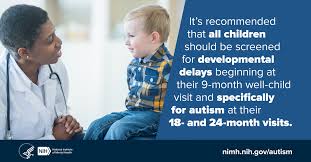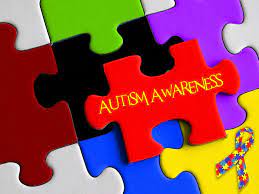Unveiling the Spectrum of Neurodiversity
Understanding Autism, a complex developmental disorder, has gained significant attention in recent years. This blog aims to shed light on the intricacies of autism, exploring its spectrum and embracing the concept of neurodiversity. Furthermore, by examining its characteristics, diagnostic criteria, and the challenges faced by individuals on the autism spectrum, we can foster a deeper understanding and create a more inclusive society.
Defining Autism:
Autism, or ASD, is a neurological condition with differences in social communication, restricted interests, and repetitive behaviors. Additionally, individuals with varying cognitive abilities are affected by autism, which is acknowledged as a spectrum that embraces diverse experiences and strengths.
Diagnostic Criteria:
The spectrum encompasses a diverse range of individuals, each with unique abilities, challenges, and perspectives. Some may exhibit exceptional talents in specific areas, such as art, mathematics, or music, while others may require significant support in daily living skills. Moreover, this broad spectrum challenges traditional notions of neurotypicality and emphasizes the importance of embracing neurodiversity.
The Autism Spectrum:
The diagnosis is typically based on a comprehensive evaluation, considering behavioral observations, developmental history, and standardized assessments. Additionally, the Diagnostic and Statistical Manual of Mental Disorders (DSM-5) provides guidelines that aid clinicians in identifying the presence and severity of ASD symptoms.
Challenges and Support:
Individuals on the autism spectrum may encounter various challenges in communication, social interaction, sensory processing, and flexibility of thought. However, with appropriate support and accommodations, these challenges can be minimized, empowering individuals to thrive and reach their full potential. Early intervention, educational programs, therapy, and assistive technologies play vital roles in supporting individuals with autism.
Promoting Inclusion and Acceptance:
Embracing neurodiversity entails recognizing and respecting the unique strengths and perspectives of individuals on the spectrum. Moreover, by creating inclusive environments, promoting acceptance, and fostering equal opportunities, we can empower individuals with autism to lead fulfilling lives, contribute to society, and effectively break down barriers of stigma and discrimination.
Conclusion:
Autism, as a multifaceted condition, offers us an opportunity to celebrate diversity and appreciate the rich tapestry of human experience. Additionally, by understanding the spectrum, recognizing the challenges faced by individuals with ASD, and embracing neurodiversity, we can build a more inclusive world where everyone has the opportunity to thrive and reach their full potential. Together, let us embark on this journey of acceptance, support, and empowerment for individuals with ASD and their families.


